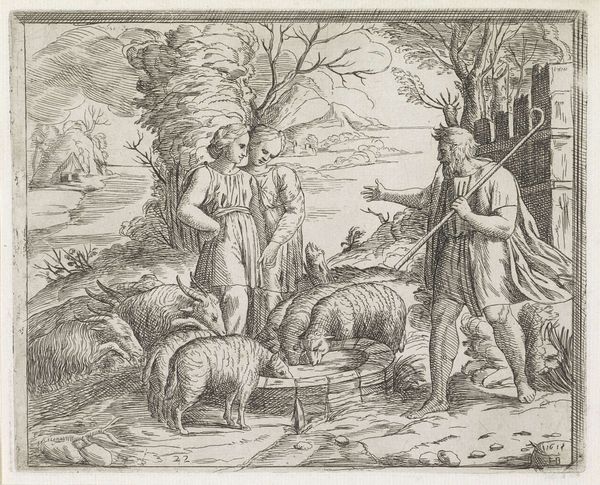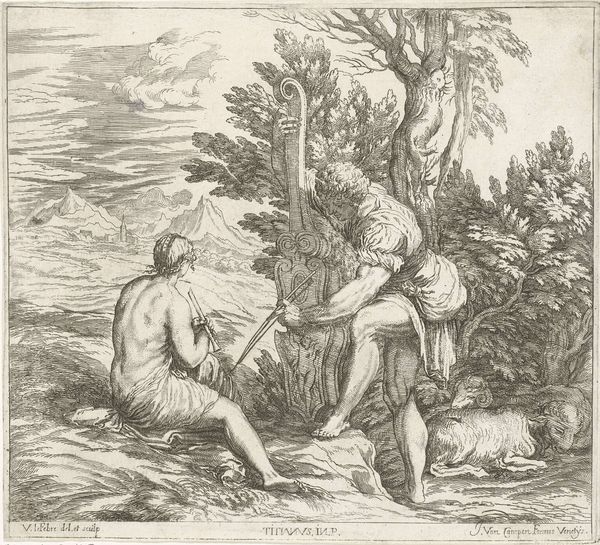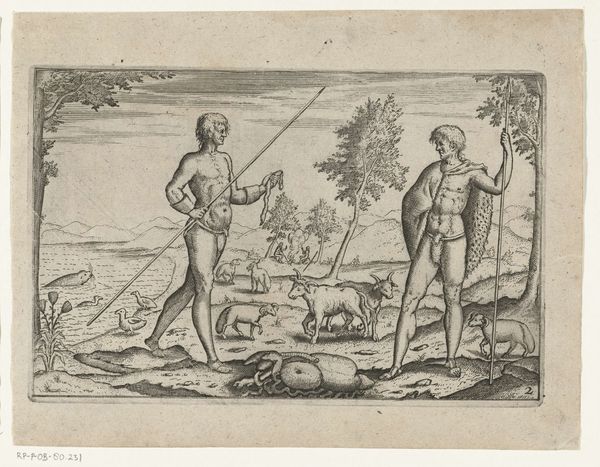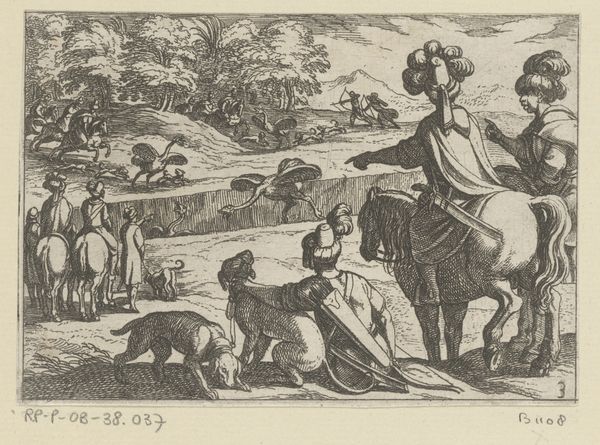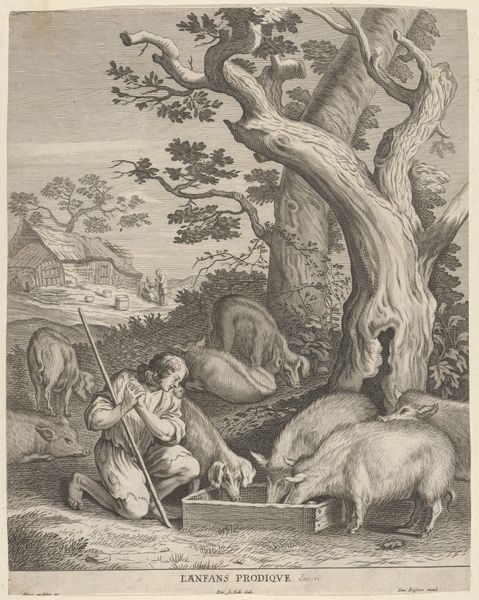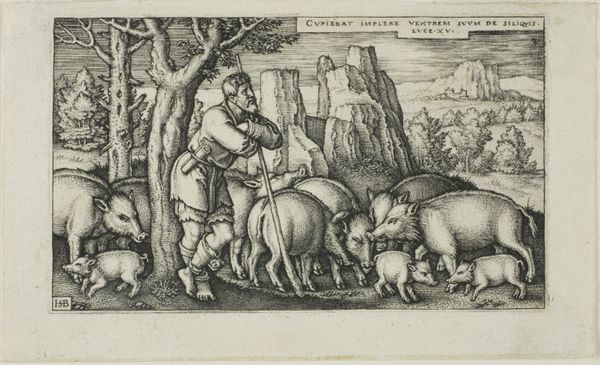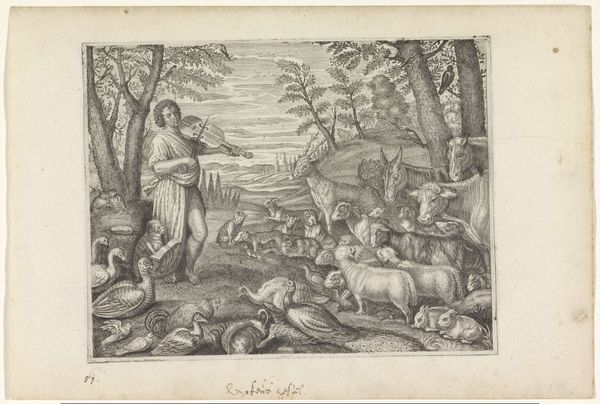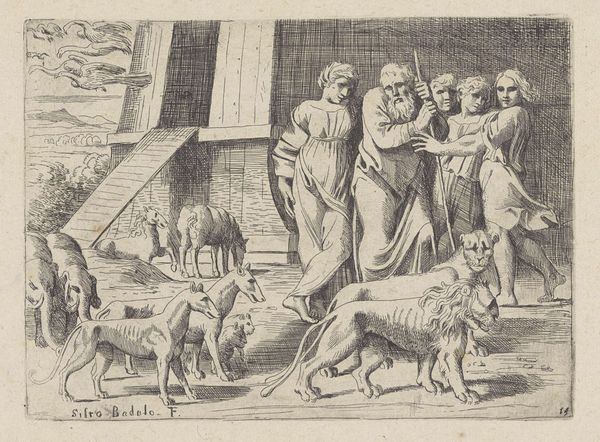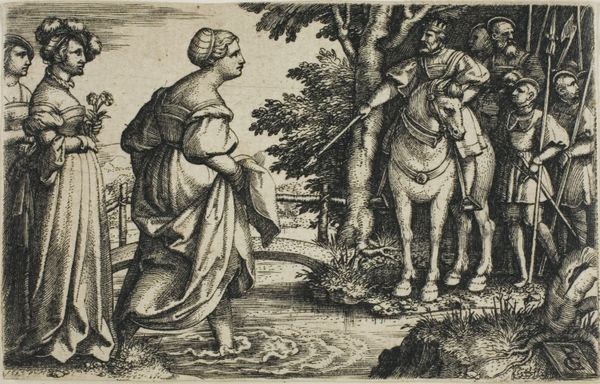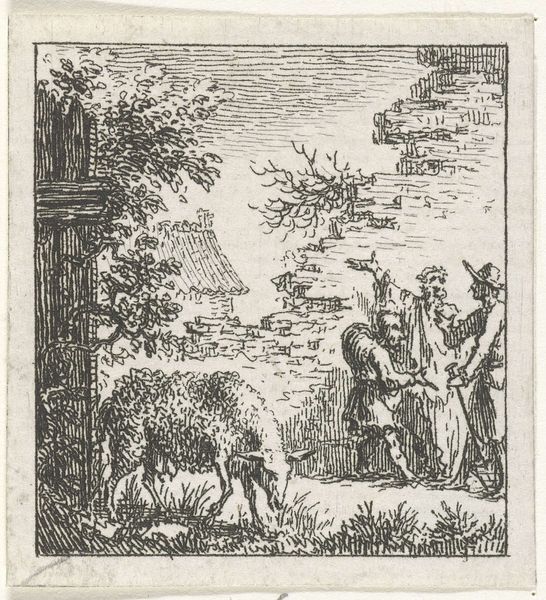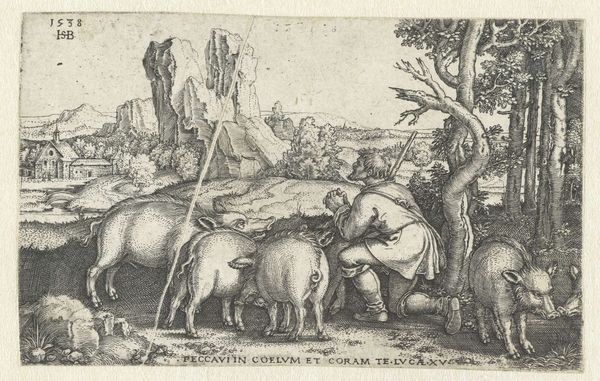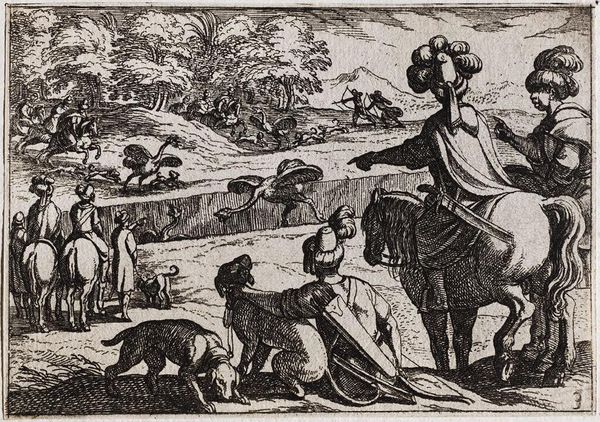
print, etching, engraving
#
toned paper
#
light pencil work
#
narrative-art
# print
#
pen sketch
#
etching
#
pencil sketch
#
sketch book
#
landscape
#
figuration
#
personal sketchbook
#
pen-ink sketch
#
pen work
#
sketchbook drawing
#
history-painting
#
italian-renaissance
#
sketchbook art
#
engraving
Dimensions: height 131 mm, width 179 mm
Copyright: Rijks Museum: Open Domain
Curator: I'm struck by the composition. It has a staged quality, almost theatrical, yet also intimate because of the level of detail the artist employs in what otherwise feels like a preliminary sketch. Editor: You're right, there's a wonderful tension. We're looking at "The Meeting of Jacob and Rachel at the Well" by Sisto Badalocchio, dating back to 1607. It's an etching and engraving, a print, so it makes sense it might have been produced quickly and made for wide distribution. The pastoral setting reminds one of Arcadia. Curator: The well itself becomes quite symbolic. In art history, wells and springs often represent life, purity, and potential. This meeting by the well suggests more than just a chance encounter. It foreshadows the lineage of Jacob. It implies a divinely ordained union, almost. Editor: True, the Bible is full of well encounters, water being at the basis of civilization but also religious revelation. What is more significant: the fact that she is coming to water her father's sheep suggests the active role of women in that society. We see a strong female presence—the two women even appear to be touching in a tender manner. They appear unified. Curator: The attire certainly seems more neoclassical in design, not historically accurate for the actual biblical event, reflecting, I suppose, the aesthetic values of the artist's time and the market to which he was catering. Badalocchio had been a pupil of Agostino Carracci, and it shows in this idealization of the figures in this historical tableau. It really showcases how historical narratives are constantly being reinterpreted through the lens of contemporary culture. Editor: This isn't merely illustration; it's interpretation. It suggests that religious events and ideas are not only historical occurrences but resonate symbolically for his era. They embody ideals of love, providence, and social structures that Badalocchio saw as worthy of visual representation. And it is through these subtle shifts of imagery that we come to really appreciate a broader scope of art making and reception. Curator: Absolutely. The confluence of social, historical, and symbolic layers provides for deep and diverse artistic exploration. Editor: Indeed. The weight of imagery on the narrative of humanity itself.
Comments
No comments
Be the first to comment and join the conversation on the ultimate creative platform.
